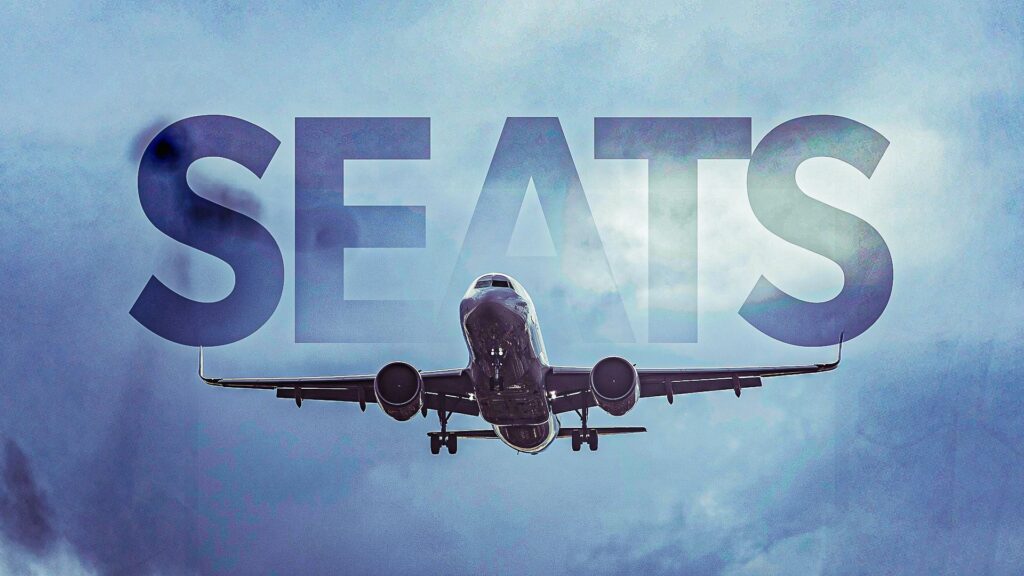
American Airlines has solidified its position as the world’s largest airline for the summer 2025 season, operating an impressive total of 151.7 million seats. This data, sourced from OAG, highlights the airline’s dominance in both domestic and international markets, showcasing its extensive fleet and global reach.
With nearly 1,000 aircraft in service, American Airlines leads the US market significantly. Following closely are Delta Air Lines with 136 million seats, Southwest Airlines at 132 million seats, and United Airlines with 117 million seats. Together, these four airlines account for 74% of all seats available in the country, illustrating the concentrated nature of the US airline industry.
Competition and Market Share
American Airlines is not without competition. The airline’s growth occurs amidst a landscape populated by full-service and low-cost carriers. The following is a list of the largest US airlines by seat capacity for the summer 2025 season:
– 1. American Airlines: 151 million seats
– 2. Delta Air Lines: 136 million seats
– 3. Southwest Airlines: 132 million seats
– 4. United Airlines: 117 million seats
– 5. Alaska Airlines: 34 million seats
– 6. Spirit Airlines: 24 million seats
– 7. Frontier Airlines: 23 million seats
– 8. JetBlue: 23 million seats
– 9. Allegiant Air: 13 million seats
– 10. Hawaiian Airlines: 8 million seats
This data underscores the competitive dynamics in the aviation sector, with American Airlines’ vast operations setting a benchmark for its rivals.
Strategic Hubs Enhance Connectivity
American Airlines operates out of ten major hubs across the United States, ensuring extensive connectivity. These hubs include:
1. Charlotte Douglas International Airport (CLT) – 69% market share
2. Dallas/Fort Worth International Airport (DFW) – 66% market share
3. Miami International Airport (MIA) – 57% market share
4. Philadelphia International Airport (PHL) – 46% market share
5. Phoenix Sky Harbor International Airport (PHX) – 32% market share
6. Ronald Reagan Washington National Airport (DCA) – 28% market share
7. Chicago O’Hare International Airport (ORD) – 23% market share
8. LaGuardia Airport (LGA) – 22% market share
9. Los Angeles International Airport (LAX) – 15% market share
10. New York John F. Kennedy International Airport (JFK) – 13% market share
Focusing on two key hubs, Los Angeles International Airport (LAX) and Miami International Airport (MIA), reveals the strategic importance of these locations.
At LAX, American Airlines is a crucial player in transpacific connectivity, operating from Terminal 4 and serving over 70 destinations. The airline recently embarked on a $1.6 billion modernization project for Terminals 4 and 5, aimed at enhancing customer experience through improved facilities.
In contrast, MIA serves as American Airlines’ main gateway to Latin America. The airline commands 57% of passenger traffic at the airport, connecting Miami to numerous destinations across Central and South America, as well as Europe. The airline’s investment in its North Terminal includes upgraded lounges and check-in areas, further solidifying its position in the region.
The busiest international routes from Miami International Airport in 2024 illustrate American Airlines’ significance in the market:
1. London Heathrow Airport (LHR) – 1,033,000 passengers
2. Bogotá El Dorado International Airport (BOG) – 1,000,000 passengers
3. Lima Jorge Chavez International Airport (LIM) – 878,000 passengers
4. Panama City Tocumen International Airport (PTY) – 826,000 passengers
5. São Paulo Guarulhos International Airport (GRU) – 822,000 passengers
American Airlines remains a key player in the global aviation industry, with a fleet modernization program that includes new aircraft such as the Boeing 737 MAX series and Airbus A321XLR. The airline’s commitment to improving its fleet and customer experience positions it well for future growth.
Founded in April 1926, American Airlines has evolved through numerous mergers and acquisitions, becoming a leading airline in the US. The merger with US Airways in 2013 marked a significant milestone in its history, allowing for expanded operations and market reach.
As it navigates challenges such as debt and increased competition, American Airlines continues to focus on reliability and global network expansion. Without significant intervention from competing airlines, it is likely to maintain its status as the largest airline in the US by seat capacity for the foreseeable future.





